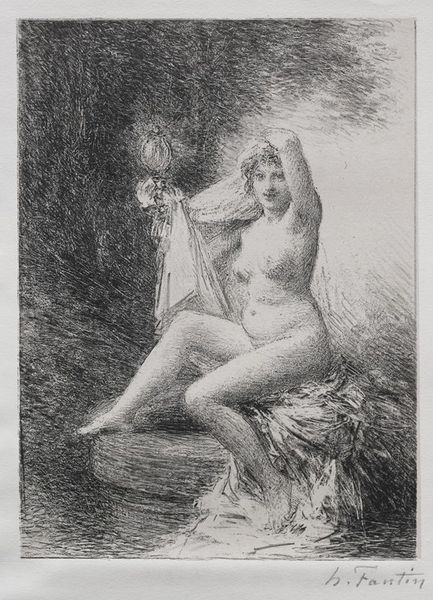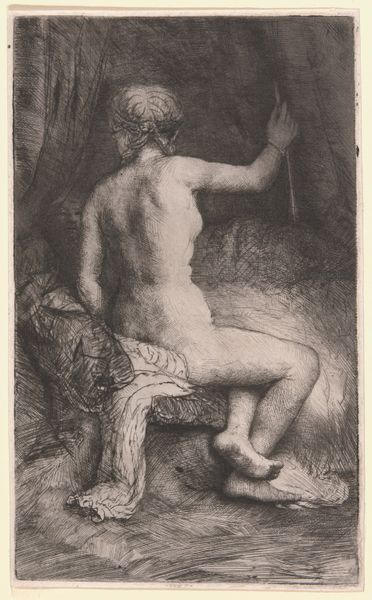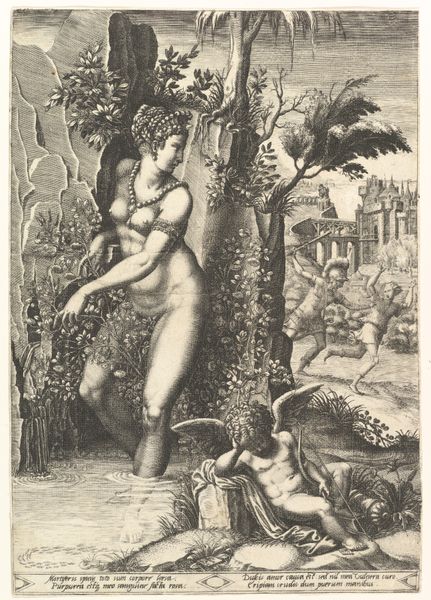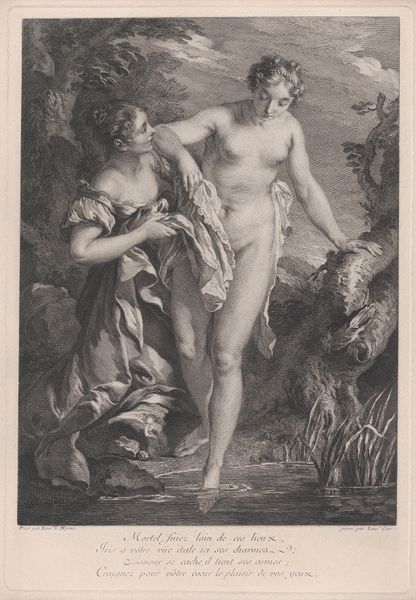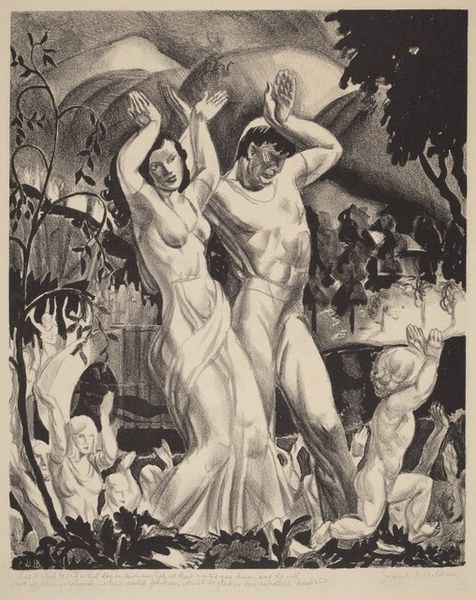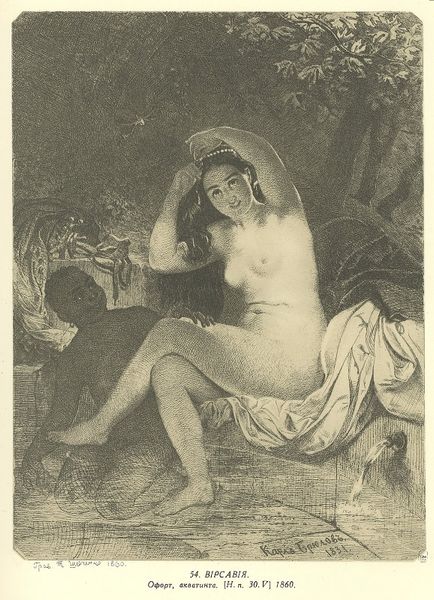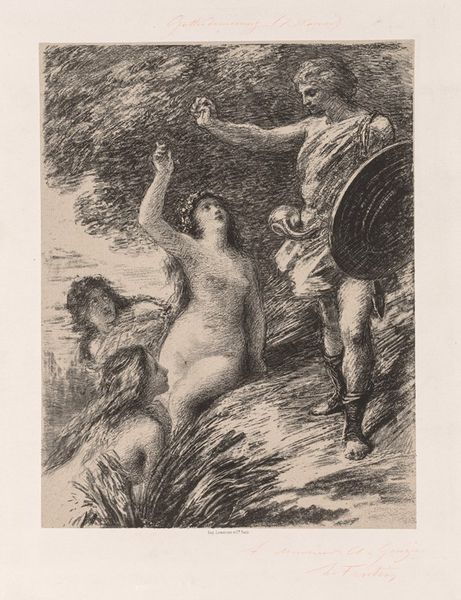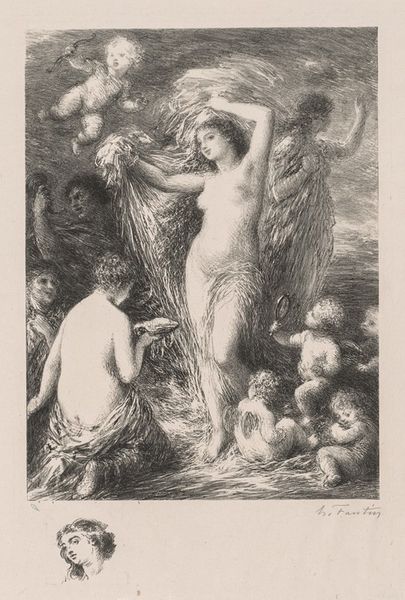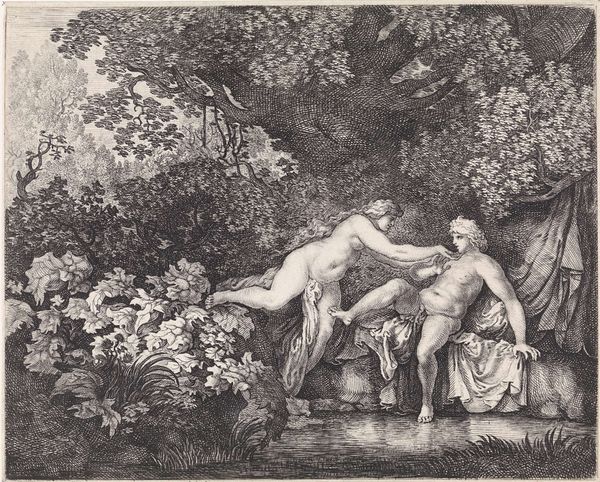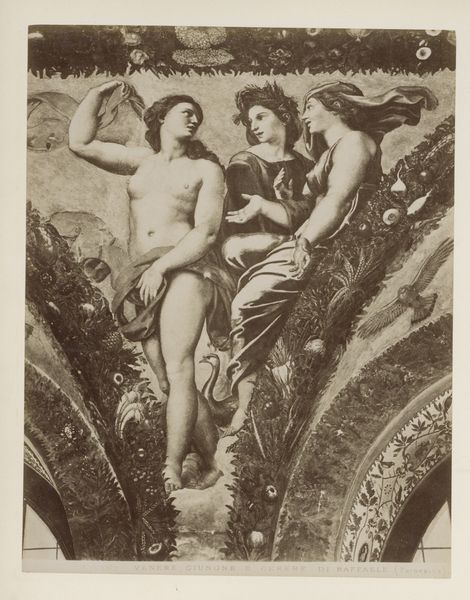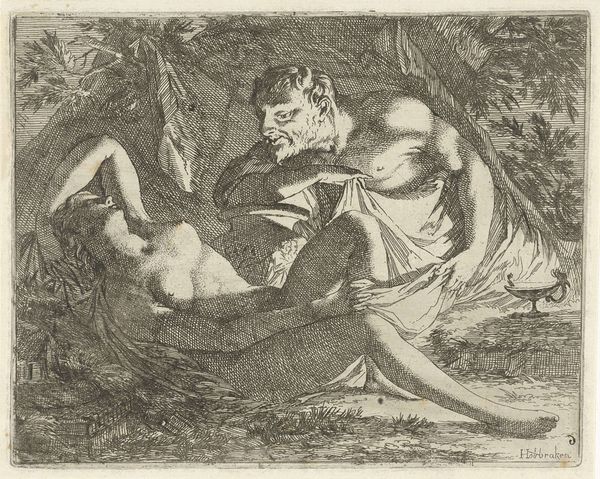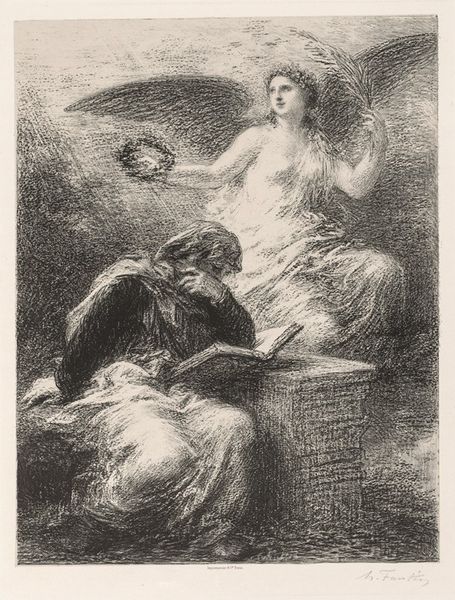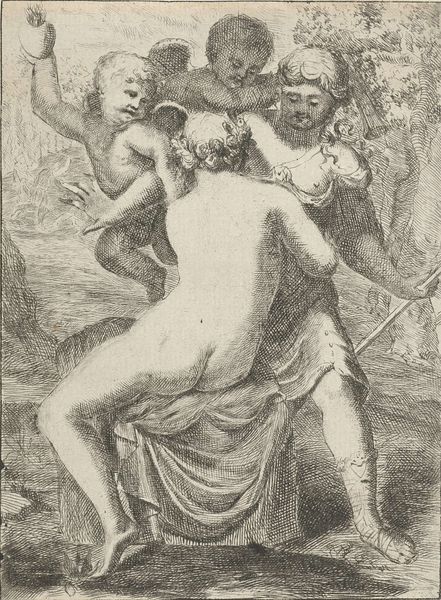
drawing, print, ink, engraving
drawing
landscape
figuration
ink
pencil drawing
romanticism
portrait drawing
history-painting
engraving
Copyright: National Gallery of Art: CC0 1.0
Curator: Immediately striking! There’s a kind of feverish energy to this composition, especially in the rendering of Daphne’s desperate flight. Editor: This is "Apollon et Daphne" by Théodore Chassériau, created in 1844. It's an engraving that captures the classical myth, offering insight into the period's engagement with both classical themes and printmaking techniques. Curator: Yes, the medium here really speaks to the era. I’m drawn to the quality of the line – scratchy and uneven, conveying a sense of immediacy, like it was quickly etched under pressure. Look at Apollo's robes, the dense foliage – so much intricate labor evident in the creation of this piece. It's not just depicting the myth; it's revealing the artist’s physical involvement in the production of the image itself. Editor: And what’s also significant is how Chassériau chooses to represent this narrative moment. He highlights the power dynamics inherent in the myth. Apollo's pursuit is a social commentary on the artistic representations of women. It reflects and perpetuates a complex and often problematic view. It demands the attention and interpretation of the viewer within this framework. Curator: Agreed. Seeing the labor of production overlaid with those issues complicates the reading of Romanticism. There’s a tension there – celebrating craftsmanship but depicting these violent scenes. How are we implicated in that consumption, of the image and the implied narrative? Editor: It highlights a contradiction within the artistic production of that period and its public reception. Galleries and academic institutions would've framed Chassériau's piece as a continuation of a tradition, while overlooking the power dynamics involved in creating and viewing such art. It reflects how cultural institutions actively participated in shaping perceptions of beauty, mythology, and, ultimately, power structures. Curator: It really urges one to consider not just what we are seeing, but the act of seeing itself as a physical and cultural labor. Editor: Precisely, and how those dynamics play out within the larger context of museums and art history narratives. This piece makes one contemplate about the political undertones and public role of an artwork.
Comments
No comments
Be the first to comment and join the conversation on the ultimate creative platform.

